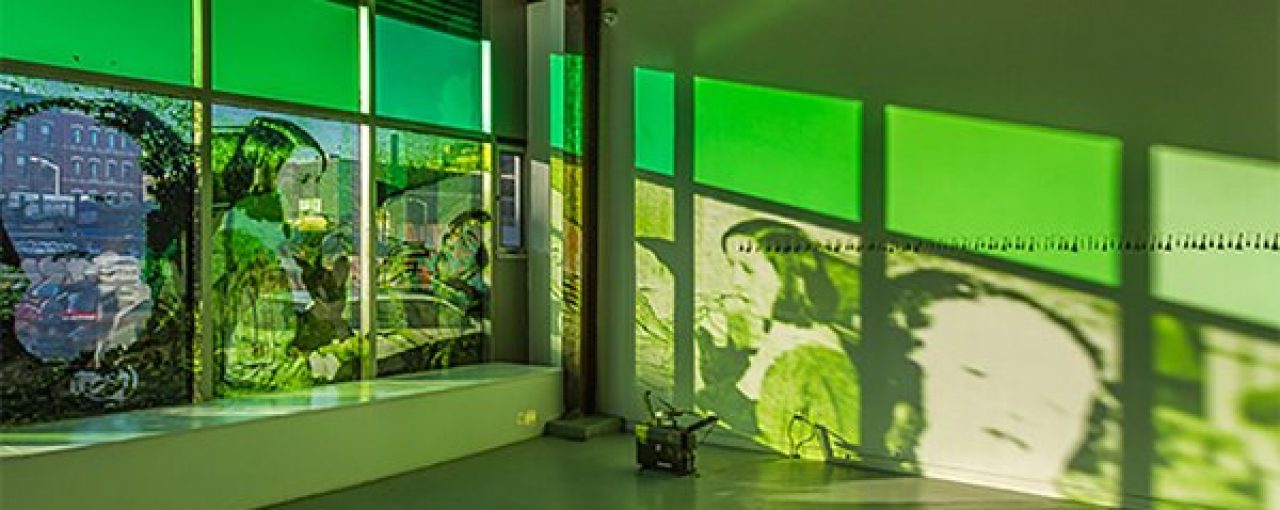Winter 2017 Highlights
By John S. Berman, WTP Art Correspondent
 Four times a year, WTP art correspondents from around the country will report back on the previous season, with images from exhibitions you otherwise might have missed, and their own insights into these varied venues.
Four times a year, WTP art correspondents from around the country will report back on the previous season, with images from exhibitions you otherwise might have missed, and their own insights into these varied venues.
It is difficult to believe that we are finally slowly emerging from what has sometimes felt like an endless long, cold, dark, dreary winter in Brooklyn. Sometimes the only solace on a perpetually gray afternoon has been the opportunity to connect with more emerging artists and curators in both new and familiar galleries throughout the borough. The following are three exciting gallery group shows that actually made me look forward to venturing to locales, both new and old, to explore the creative energy of those whose work are well worth the trip.
In a neighborhood often associated with a younger generation of up-and-coming artists, Odetta gallery owner Ellen Hackl Fagan’s express interest is in exhibiting works by “mid-career artists who have honed their craft and their vision.” An accomplished artist and consummate music lover who named her small gallery after the legendary folk roots vocalist, Fagan’s broad curatorial vision, which she refers to as “Buddha Mind, Minimalism, playfulness and encyclopedic obsessiveness,” embraces contemporary painting, sculpture, installation, and photography. She also recognizes that even artists who have labored for many years still struggle to gain a foothold in the competitive gallery scene. In addition, Fagan seeks to create group shows where each artist’s work engages with the others, as well as with the audience.
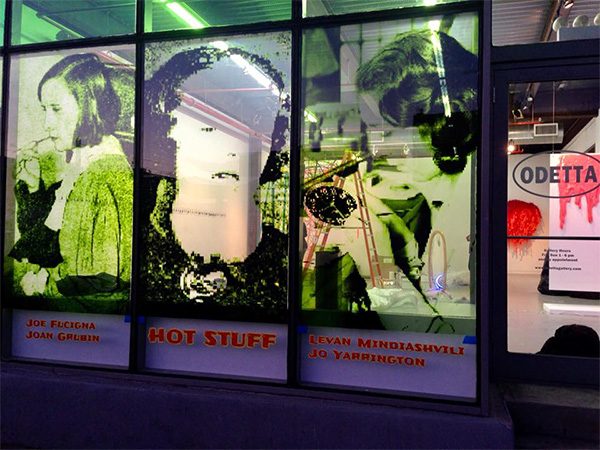
Her winter exhibition, Hot Stuff, embodied this goal. Four very different artists who all work in the installation sculpture medium brought fluorescent color to this light-filled gallery and immediately enticed the viewer upon entering.
Jo Yarrington’s “Ghost Girls” brings together photographically derived images with translucent materials, including glass wax surfaces, and found objects to explore, in her words, “our own sense of perception.”
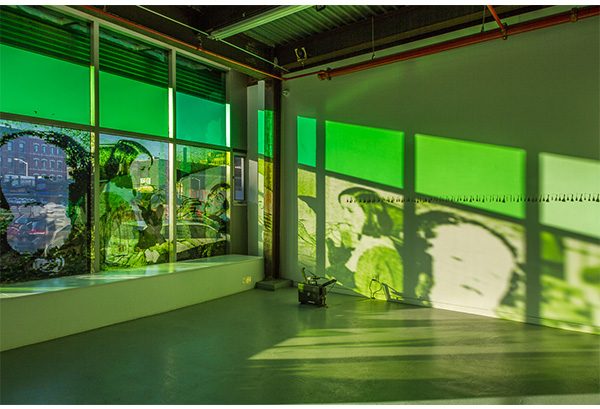
Levan Mindiashvili’s work, from a new project entitled The Color Of The Sky, fuses painting and object-making, combines pigmented hydrocal tiles with charcoal drawings and abstracted found architectural remnants. In the Georgian (think former Soviet Union, not Atlanta)-born artist’s own words, “these new images question the gap between the tradition of self-portraiture (critical self-analysis) and today’s widespread ‘selfie’ culture.”
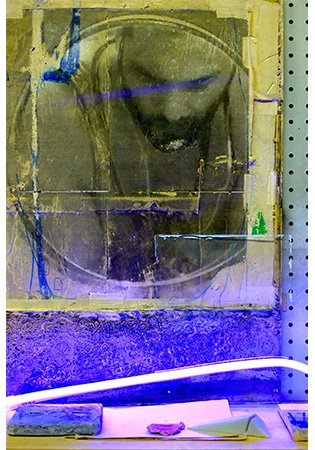
Joan Grubin’s “Air Net,” which occupies the corner wall, communicates the intricate relationship between the physicality of paper and pigments, and the reflection of light, shadows, and color and what she refers to as “negative space.”
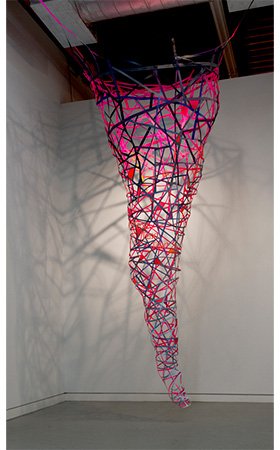
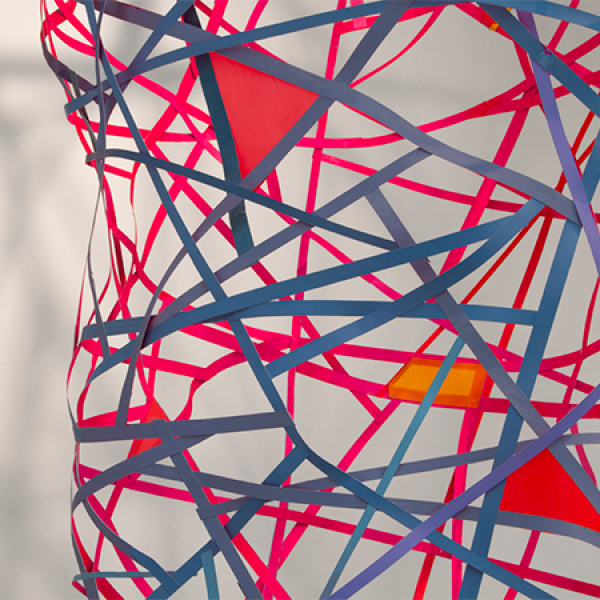
Joseph Fucigna’s two colorful sculptures “Hot Pink_Lime Green Putty Drip” and “Burning Bush” take industrial and recycled materials to create imagery that conveys both playful humor as well as thoughtful reflection.
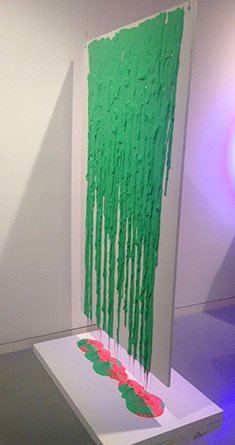
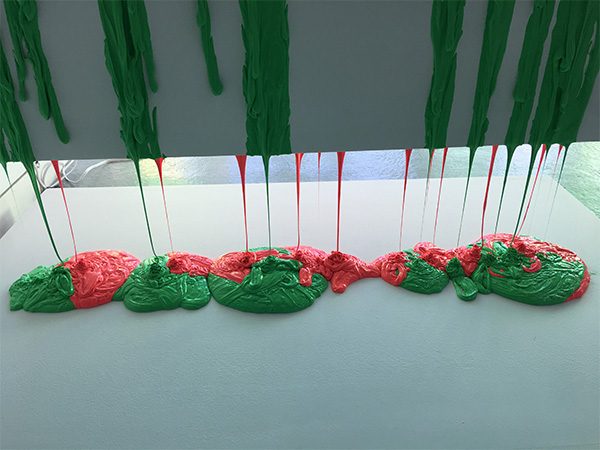
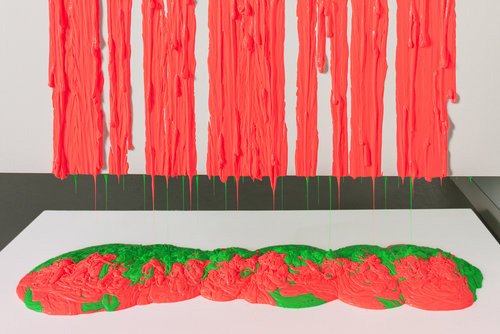
Up the street from Odetta in the 56 Bogart Street building, director and curator, Larry Greenberg, brought a uniquely collaborative group show, Watermelon Punch, to the Studio 10 gallery this winter.

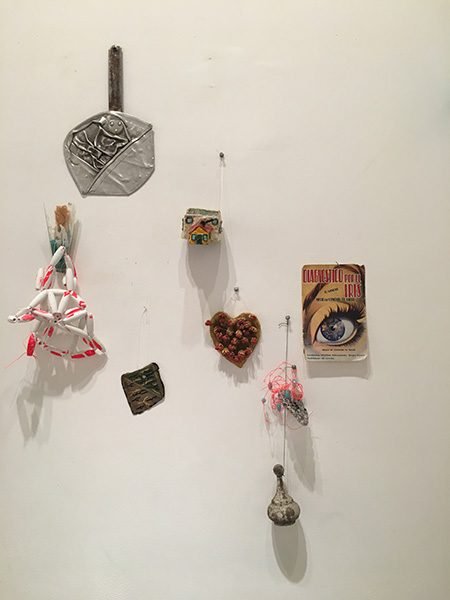
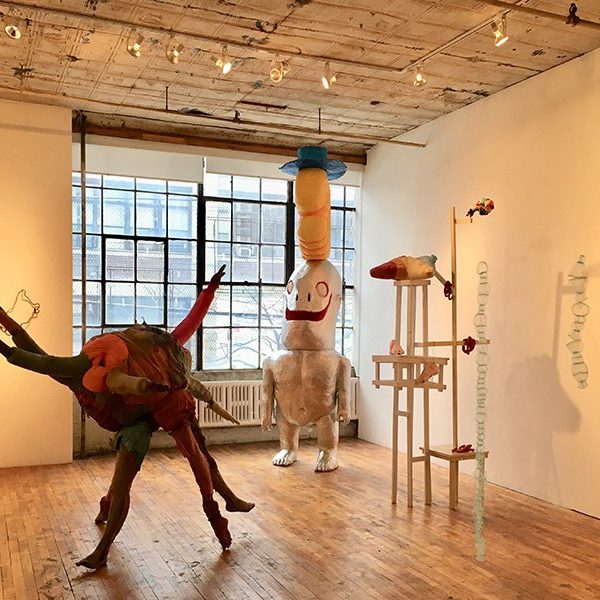
The four artists, Caroline Cox, Tim Spelios, Jude Tallichet, and Matt Freedman, are not only long- term friends and collaborators, but also two pairs of romantic partners. So much for the stereotype of the solitary artist living in isolation! Accomplished for their solo work and featured in earlier shows at Studio 10, Spelios is known for his unique collages made from cut-up photographs.
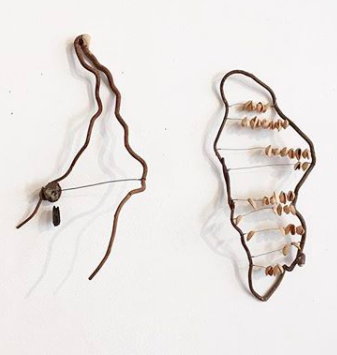
Cox creates sculptures using horsehair fabric, mesh, glass spheres, lenses, and pipettes. Tallichet has made a name for herself using recycled industrial materials such as body parts of old cars to create large-scale sculpture. Using the medium of “graphic non-fiction,” Freedman has chronicled his struggles living with a rare form of cancer through detached irony and dark humor.
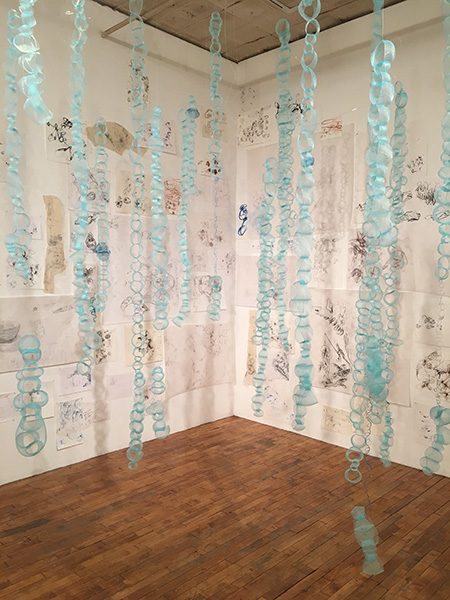
on wall: drawings on paper
In describing their collective process of creating this group show, the artists statement reads “the eclipse as the animating principle—the notion of time passing” and “inversions, conversions, perversions.” The result is a glorious pastiche of each creator’s innovative style. In the gallery entrance, the foursome assembled what they referred to as an “improvised collaborative installation” with each artist contributing to the final product. One sculpture, created by Freedman, resembles a mannequin using found objects to connote bodies in space with stretched arms, legs, and feet pointed in a variety of directions.
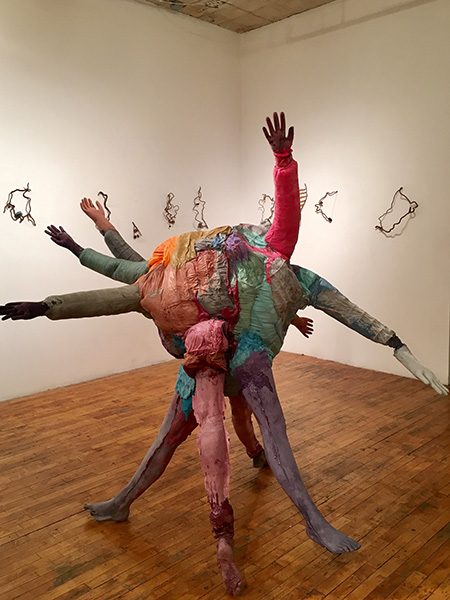
Cox’s work cascades from the ceiling, surrounded by a corner wall of her drawings on paper. The installation features strands of blue coils, created by joining together individual hand-sewn rings of horse hair fabric with monofilament. Spelios’s addition on the wall surrounding the mannequin uses wire, wood, and tree branches to create organic designs in the shape of musical instruments. Tallichet’s massive sculpture suggests a rather unthreatening-looking alien creature with a yellow tube of hair and top hat. The foursome also partnered to create a performance piece in the gallery that commented on their collective process using the installations as a backdrop that also featured, appropriately enough, a real watermelon.
Far from the buzz of the Bushwick art scene sits Tabla Rasa Gallery on the southwest tip of Sunset Park, an area surrounded by auto body shops and appliance warehouses. In this desolate corner of the borough, Audrey Frank Anastasi and her husband Joseph have developed a spacious home for edgy, eclectic work that embraces their own broad range of artistry.
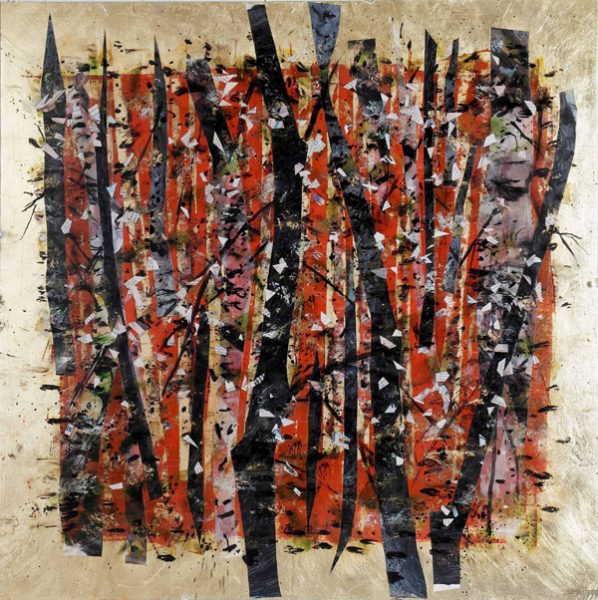
Audrey, a prolific painter whose own work was also featured in a solo show at NU Hotel Brooklyn and Welancora Gallery, and Joseph, a photographer and mixed-media artist, have each exhibited widely, and their gallery doubles as a studio for their own creations, which were also included in their ambitious winter show, Fake News, featuring a staggering thirty-one pieces from sixteen different artists that include collage, drawings, sculpture, painting and video.
Despite the evocative title, the exhibition is not solely “political” in the literal sense, but features works that in some way reference or incorporate publications and the printed word as a starting point, and encourages viewers to question or challenge their initial perceptions of “reality.” John Avelluto’s three pieces exemplify this concept, using what appears to be a sheet of burned paper but is actually flat acrylic paint. His broader point is that ordinary paper, as we know it, as well as handwriting and type-writing are dissolving in our digital media environment.
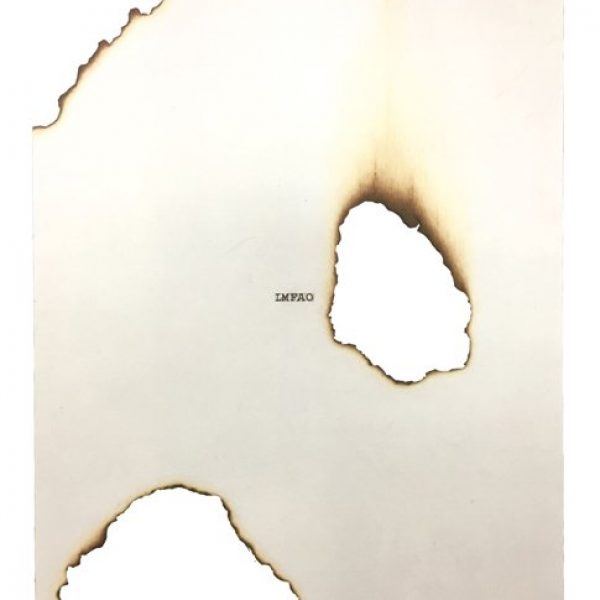
Similarly, Kate Fauvell’s four large-scale works, three of which open the exhibition and which she calls “A Love Letter to My City,” integrate photography, collage, and acrylic on canvas to create a visual and decidedly unromanticized and gritty montage of three New York City neighborhoods—providing an ironic twist to the Valentine card-sounding name of the series and subverting and upending our notion of what a “love” letter looks like. Peter Patchen’s “The Pursuit of Peace Bayonet” uses a 3-D print covered with an iron finish to resemble a classic sculpture of a historical weapon of war.
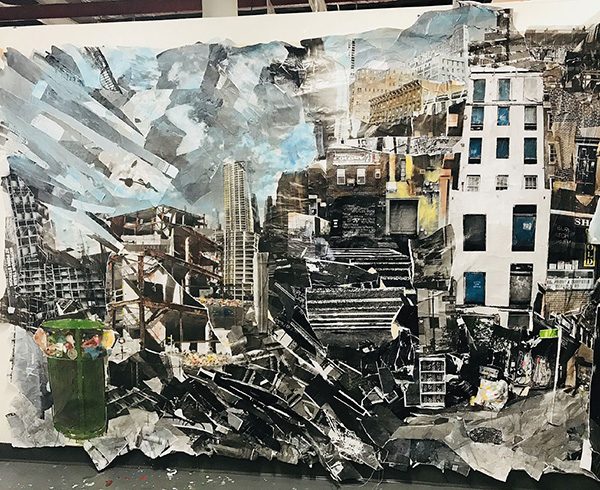
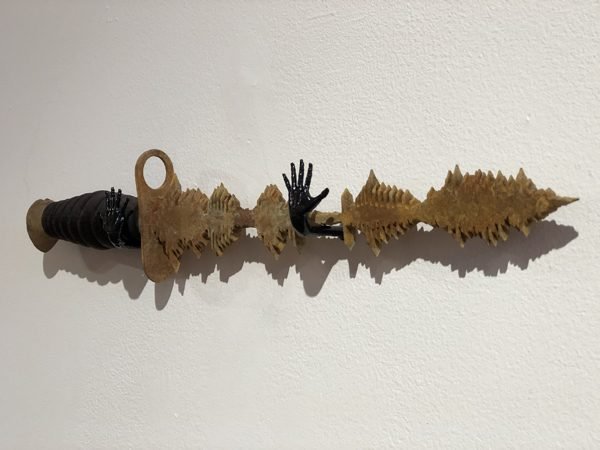
The most explicitly political work in Fake News is Sophia Dawson’s contribution from her “To Be Free” series, which portrays the more than tenty incarcerated members of the Black Panther movement from the 1960s and1970s, largely forgotten today. For this show, Dawson exhibited “Brother Mondo II,” an oversized portrait that isolates the large dark black hand of David Rice, also known as Mondo we Langa, whom she exchanged letters with for two years before he died in prison in 2016. A different kind of political expression can be found in robin holder’s (holder chooses to write her name in lowercase letters) two works, “Veterans Day” and “Martin Luther King Jr. Day,” from her diminutive handmade artist books of every major holiday, which use a piece of fabric designed in the shape of an article of clothing to poignantly represent the conflicts and challenges inherent in American identity.
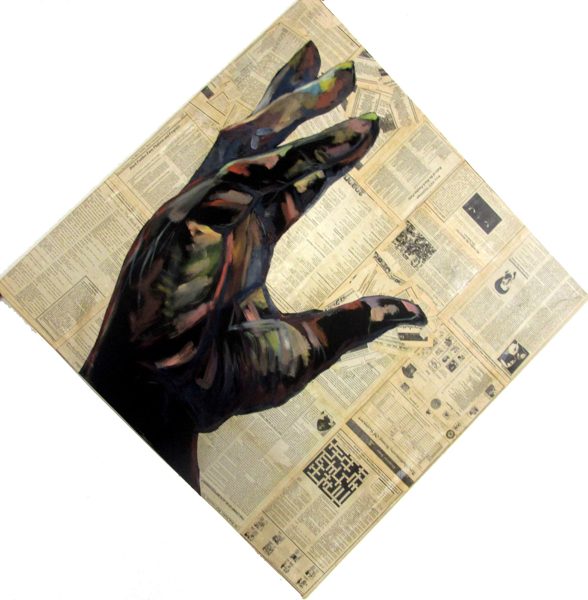
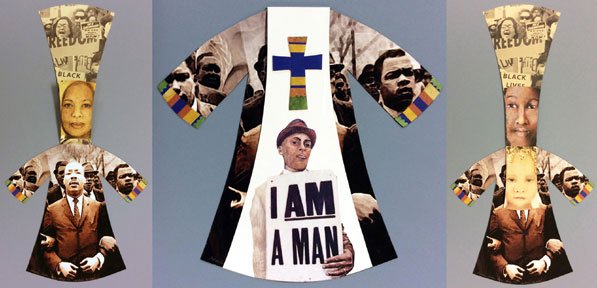
William “Good Will” Ellis’s two evocative works from his series, The Drink, share a wall with Dawson, combine painting of and expressive black male face in bright red, with a collage cutout of newsprint shaped like waves to viscerally communicate the image of a man struggling under water—exemplifying the plight of people of African heritage who perished by drowning or other means during the long, tortuous“ Middle Passage” Trans-Atlantic slave trade journey.
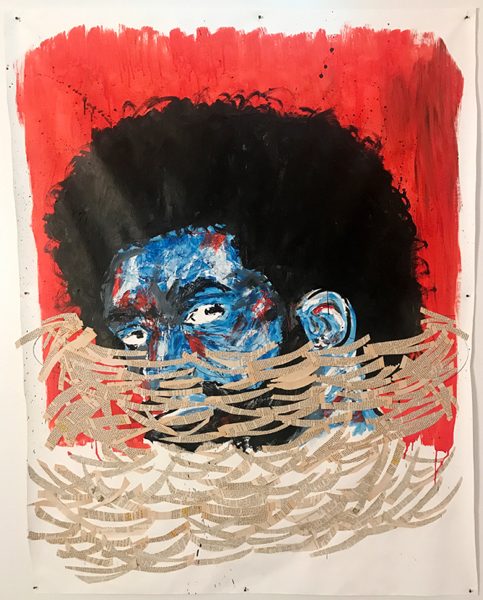
Despite their unique and distinct qualities, these three gallery shows all communicate the power and possibility of theme-based group exhibitions to elevate the skills of individual artists into a conceptually and aesthetically dynamic whole. The creative potential of projects similar to the ones highlighted here deserve to be cultivated and supported.
If you are interested in becoming an art correspondent for WTP, please inquire at wtp@thewoventalepress.net
Copyright 2018 Woven Tale Press LLC. All Rights Reserved.

